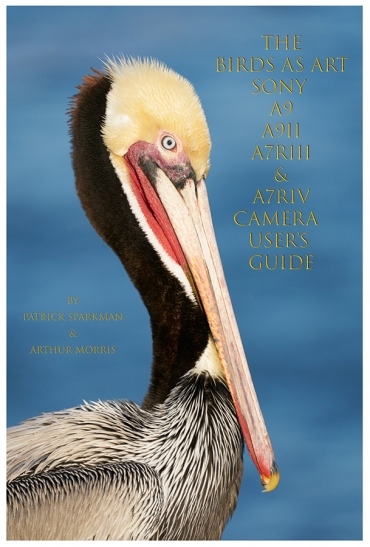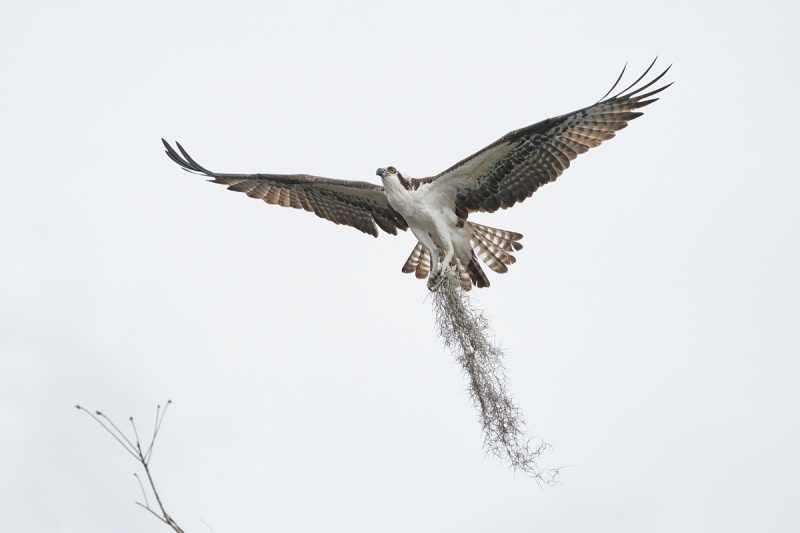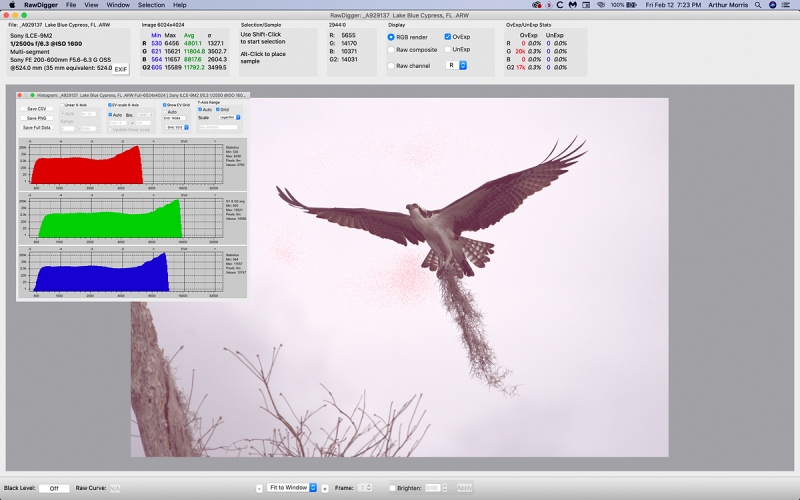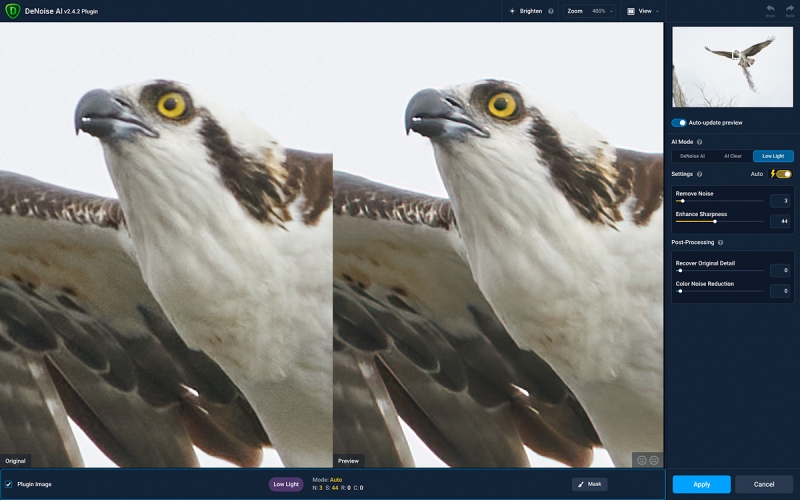What’s Up?
Me early, as usual. Clemens and I enjoyed two great sessions on Lake Blue Cypress yesterday. I learned a ton about my R5, mainly about which AF Method is best — I am now very clear on that, and I figured out how to set up the C1-C3 Modes. (Note: Canon has SONY killed in that department.) The former will be detailed in the first and final update of the BAA R5/R6 AF e-Guide (coming this week) and in the BAA Canon EOS R5 Camera User’s e-Guide. The latter will appear only in the Camera User’s Guide. Even though I did not write a single word on either guide yesterday — Clemens kept me too busy! — I made a ton of progress on each of them.
I loaned the R5/RF 100-500 to Clemens twice yesterday. He was stunned by the light weight of the rig and stunned by the accuracy of the AF system. Clemens and Dr. Greg Gulbransen are heading up to Homer in about a week.
Today is Saturday 13 February 2021. The morning forecast is for cloudy with south winds. We are heading to nearby Lake Kissimmee to try for Snail Kites.
This post took about 1 1/2 hours to prepare and makes fifty-six days in a row with a new one. Please remember…
Please Remember
With income from IPTs now at zero, please, if you enjoy and learn from the blog, remember to use one of my two affiliate programs when purchasing new gear. Doing so just might make it possible for me to avoid having to try to get a job as a Walmart greeter and will not cost you a single penny more. And if you use Bedfords and remember to enter the BIRDSASART code at checkout, you will save 3% on every order and enjoy free second-day air shipping. In these crazy times — I am out at least forty to sixty thousand dollars so far due to COVID 19 (with lots more to come) — remembering to use my B&H link or to shop at Bedfords will help me out a ton and be greatly appreciated. Overseas folks who cannot order from the US because of import fees, duties, and taxes, are invited to help out by clicking here to leave a blog thank you gift if they see fit.
|
|
RawDigger e-Guide pre-publication version |
The RawDigger e-Guide with Two Videos
by Arthur Morris with Patrick Sparkman
The RawDigger e-Guide was created only for serious photographers who wish to get the absolute most out of their raw files.
Patrick and I began work on the guide some time in July 2020. At first we struggled. We asked questions. We learned about Max-G values. We puzzled as to why the Max G values for different cameras were different. IPT veteran Bart Deamer asked lots of questions that we could not answer. We got help from RawDigger creator Iliah Borg. We learned. In December, Patrick came up with an Adapted Histogram that allows us to evaluate the exposures and raw file brightness for all images created with all digital camera bodies from the last two decades. What we learned each time prompted three head-to-toe re-writes of the guide.
The point of the guide is to teach you to truly expose to the mega-Expose-to-the-Right so that you will minimize noise, maximize image quality, best utilize your camera’s dynamic range, and attain the highest possible level of shadow detail in your RAW files in every situation. In addition, your properly exposed RAW files will contain more tonal information and feature the smoothest possible transitions between tones. And your optimized images will feature rich, accurate color.
We teach you why the GREEN channel is almost always the first to over-expose. We save you money by advising you which version of RawDigger you need. We teach you how to interpret the Max G values for your Canon, Nikon, and SONY camera bodies. It is very likely that the Shock-your-World section will shock you. And lastly — thanks to the technical and practical brilliance of Patrick Sparkman — we teach you a simple way to quickly and easily evaluate your exposures and raw file brightness using an Adapted RawDigger histogram.
The flower video takes you through a session where artie edits a folder of images in Capture One while checking the exposures and Max-G values in RawDigger. The Adapted Histogram video examines a series of recent images with the pink histograms and covers lots of fine points including and especially how to deal with specular highlights. The directions for setting up the Adapted Histogram are in the text.
If we priced this guide based on how much effort we put into it, it would sell it for $999.00. But as this guide will be purchased only by a limited number of serious photographers, we have priced it at $51.00. You can order yours here in the BAA Online Store.
|
|
|
134 sold to rave reviews. The SONY e-Guide by Patrick Sparkman and Arthur Morris |
The Sony Camera User’s e-Guide (and Videos)
Click here to purchase the guide with one Camera Set-up Video. Be sure to e-mail us by clicking here to specify your camera body so that we can send you a link for the correct video.
Click here to purchase the guide with two Camera Set-up Videos. Be sure to e-mail us by clicking here to specify your two camera bodies so that we can send you links for the correct videos.
Click here to learn more about the SONY e-Guide.
Folks who have used my B&H affiliate links or purchased their SONY gear are invited to e-mail for discount information.
Great Topaz News!
Folks who use the BAA Topaz link to purchase Sharpen AI, DeNoise AI, or the Utility Bundle (or any other Topaz plugins) will receive a 15% discount by entering the ARTHUR15 code at checkout. If the stuff is on sale (as it usually is), you save 15% off of the sale price! To get the discount you must use my link and you must enter the discount code. Be sure to start with this link.
Those who purchase Sharpen AI, DeNoise AI, or any other Topaz plug-ins using my link and then entering the ARTHUR15 code at checkout can e-mail to request a short Getting Started with Topaz e-Guide. Please include a copy of your Topaz receipt that shows the discount. Aside from the basics, the guide explains how to install the plug-ins so that they appear in the Photoshop Filter Menu.
New and Better Bedfords Discount Policy!
You can now save 3% on all of your Bedfords photo gear purchases by entering the BIRDSASART coupon code at checkout. Your discount will be applied to your pre-tax total. In addition, by using the code you will get 2nd day air shipping via Fed Ex.
Grab a Nikon AF-S Teleconverter TC-14E III and save $14.99. Purchase a Canon EOS R5 and your discount will be $116.97. Purchase a Sony FE 600mm f/4 GM OSS lens and save a remarkable $389.94! Your Bedford’s purchase no longer needs to be greater than $1,000.00 for you to receive a discount. The more you spend, the more you save.
Money Saving Reminder
Many have learned that if you need a hot photo item that is out of stock at B&H and would enjoy free second-day air shipping, your best bet is to click here, place an order with Bedfords, and enter the coupon code BIRDSASART at checkout. If an item is out of stock, contact Steve Elkins via e-mail or on his cell phone at (479) 381-2592 (Central time). Be sure to mention the BIRDSASART coupon code and use it for your online order to save 3% and enjoy free 2nd-day air shipping. Steve has been great at getting folks the hot items that are out of stock at B&H and everywhere else. The wait lists at the big stores can be a year or longer for the hard to get items. Steve will surely get you your gear long before that. For the past year, he has been helping BAA Blog folks get their hands on items like the SONY a9 ii, the SONY 200-600 G OSS lens, the Canon EOS R5, the Canon RF 100-500mm lens, and the Nikon 500mm PF. Steve is personable, helpful, and eager to please.


Gear Questions and Advice
Too many folks attending BAA IPTs (remember those?) and dozens of photographers whom I see in the field and on BPN, are–out of ignorance–using the wrong gear especially when it comes to tripods and more especially, tripod heads… Please know that I am always glad to answer your gear questions via e-mail. Those questions might deal with systems, camera bodies, accessories, and/or lens choices and decisions.
|
|
|
This image was created on Friday 12 February 2021 at Lake Blue Cypress. I used the hand held Sony FE 200-600mm f/5.6-6.3 G OSS lens (at 524mm) with the blazingly fast AF King, the Sony Alpha a9 II Mirrorless Digital camera body. ISO 1600. Exposure determined by Zebras with ISO on the rear wheel: 1/2500 sec. at f/6.3 in Manual mode. AWB at 10:21am on then-cloudy morning. Center Zone Continuous/tracking (C) AF worked perfectly here. Click to enjoy a larger version. Osprey with Spanish moss for nest |
Our Day
Friday started out foggy but the fog cleared quickly. We had some nice light early but the wind was from the west. If folks have learned anything here in recent months, it is that wind against sun conditions are not great for photographing birds in flight or for bird photography in general. By 9:00am the wind had shifted to the southeast and we had some very good chances. By 9:45 it clouded over and we had some excellent opportunities. I started with the R5/RF 100-500. I loaned that rig to Clemens mid-morning and switched over to the SONY 200-600/a9ii. I went with my SONY gear for the afternoon session while Clemens continued to be amazed by the R5/RF 100-500 set-up.
White-Sky Exposures
With my SONY gear in white sky conditions –i.e., totally cloudy — I simply set the exposure so that the entire sky is showing Zebras.
Image Question
Would you have left the tiny twigs in the lower left corner? Why or why not?
A Quick Comparison of the R5/RF 100-500 versus SONY 200-600/a9ii
The Canon rig is lighter by far. That makes it easier to handhold and easier to pan with the birds in flight. Thus, proper framing is more easily achieved with the Canon stuff. The 200-600 offers more reach– only if you do not consider pixels on the subject … (Note: the Sony Alpha a1 will swing the pixel advantage back to SONY.) Autofocus with both the r5 and the A9 ii is science fiction-like; I created 1744 images on Friday — all but one of those was focused accurately. Those included about 1,400 sharp on the eye flight shots. The single unsharp flight shot occurred when the AF point mysteriously jumped to the lower right corner of the frame …
The huge advantage for SONY is having the Zebra technology that enables users — once they know exactly how to set them up — to make perfect exposures quickly and easily in changing light time after time after time. Using the Zebra stuff correctly is — of course — detailed in the comprehensive Sony Camera User’s e-Guide and One Camera Set-up Video by Patrick Sparkman and yours truly). Getting the exposures correct with the R5 is far more difficult as the live, in-viewfinder histogram is quite lacking and far inferior to having the Zebras for still photography. With the changing light in the morning I had lots of bad exposures with the R5 — toasted highlights when the sun came out briefly and well under-exposed when a cloud covered the sun.
|
|
Image #1A: RawDigger screen capture for the Osprey with Spanish moss for nest image |
The RawDigger Adapted (pink) Histogram
As noted above, thanks to Zebra technology, making perfect exposures with SONY is far easier than it is with the Canon R5 even in difficult situations (as was the case with today’s featured “white sky” image).
In the RawDigger e-Guide, Patrick and I teach you how to set up and evaluate the Adapted (pink) Histogram. The adapted histogram was completely Patrick’s creation, and works with raw files from pretty much any digital camera now in use. It greatly simplifies all things RawDigger. In the guide you will — of course — learn why the exposure for this raw file is 100% dead-solid perfect.
|
|
|
Click on the screen capture to better see the underwing noise reduction. Image #1A: Topaz DeNoise on Low Light on the Osprey with Spanish moss for nest image |
A Topaz DeNoise on Low Light
Click on the image to note the great job that DeNoise on Low Light did with the noise on the underwing feathers. with the most recent DeNoise AI update, Low Light is often a tiny bit better than DeNoise AI … I rarely if ever go with ai Clear as it often introduces some artifacting (that is often noticeable on a bird’s eye).
With perfect exposures such as the one with today’s featured image, it is often necessary to magnify the image to 400% to see the noise in the original ISO 1600 image.
Typos
In all blog posts and Bulletins, feel free to e-mail or to leave a comment regarding any typos or errors.




















I would leave the twigs you left. Balances, shows some of the birds environment and certainly is not distracting what so ever to my eye. Nice looking shot and still amazed at the Topaz improvements.
I like the twig because it adds something to all the negative space and as others have said it gives the image balance. Try adding some exposure to the sky which would turn it white and it would look like a Japanese rice print and see if you like that effect. Thanks for the tips.
Hi Artie
I like it a lot it’s a very interesting bit of behaviour which I have never seen before and I like the twig in seems to give the image balance.
Best and love
Ken
PS it’s snowing here and -4
I like the whole thing Artie!! With the fun things he is hanging with his feet and the “twigs” or “sticks” on the bottom left are interesting too! They kind of show where he is above.
Thanks again Arthur Artie!!
I would have eliminated the tiny twigs I think but I really don’t mind them as presented. They provide balance in the image.
I like it better without the the sticks. The nesting material adds interest enough.
Thanks, Marr. I am somewhat confused. Do you like the one twig I left or would you have preferred that I eliminated that too.
with love, a
I am glad to hear that you are enjoying all of your gear and that both systems are performing well. Can you clarify the statement, “Canon has Sony killed in the ___ department”. It appears it is missing an adjective?
We’ll be curious to learn about which R5 modes you find best? My personal experience is that the most appropriate mode depends on whether one is shooting perched subjects versus BIF.
The Osprey is notable in that it didn’t appear to demonstrate any CA. I found that the 200-600 produced significant CA on the A7RIV (which didn’t have an AA filter), whereas the A9II filter seems to be effective (or perhaps you reduced it in PS?) The sticks provide an anchor point especially against a featureless sky though I would have preferred that the osprey was gazing right at you.
Any word on when you might have an A1 in your hands? Best wishes.
Hi Adam,
Should have been in “that” department, referring to the C1-C3 Modes with Canon. When you save a shooting set-up with Canon, it will include all the custom settings. SONY does not making it pretty much of a waste to use their similar M modes …
Yes, different AF modes for different purposes.
I rarely if ever notice any chromatic aberration … And the 200-600 does not at all play well with the a7r iv for birds in flight.
I am first on Bedford’s list as I got on it when I heard the rumors of the new body.
with love, artie